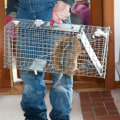While many people associate tree pruning with spring or summer yard work, winter is actually one of the best times to perform this essential task. When trees are dormant—typically during late fall through early spring—they are in a resting phase, which makes them more resilient to the stress of pruning. During dormancy, there is less sap flow, reduced risk of pest infestations, and minimal impact on tree growth, allowing for cleaner cuts and more efficient healing. Winter pruning not only helps maintain a tree’s shape and health but also prepares it for vigorous growth once the weather warms. For homeowners and property managers looking to boost the long-term beauty and safety of their trees, winter pruning offers numerous advantages that should not be overlooked.
Improved Tree Health and Growth
One of the most significant benefits of winter pruning is that it encourages healthier, more robust trees. Pruning dead, damaged, or diseased limbs during the dormant season helps prevent the spread of disease, especially fungal infections that thrive in the moist, warm conditions of spring and summer. With pests and pathogens also inactive in colder months, open wounds from pruning are less likely to become infected. Additionally, pruning during dormancy promotes stronger spring growth by redirecting energy from weak or unnecessary branches to more vital parts of the tree, ultimately resulting in a more balanced and vigorous structure.
Better Visibility and Cleaner Cuts
Winter’s bare branches provide arborists with better visibility of a tree’s natural structure, allowing them to identify and remove problematic limbs more easily. Without leaves obstructing their view, professionals can make more precise cuts that support the tree’s form and stability. This reduces the chance of over-pruning or missing key issues that are hidden by foliage in warmer months. Cleaner cuts mean faster healing and a reduced risk of stress or damage to the tree. It also ensures a more aesthetically pleasing shape that enhances the tree’s appearance year-round.
Increased Safety and Storm Protection
Pruning in winter also enhances safety by removing hazardous branches before they become a problem. Snow, ice, and strong winter winds can cause weak or overextended limbs to break, posing a risk to homes, vehicles, and people below. By addressing these vulnerabilities during the dormant season, you significantly reduce the chances of storm-related damage. Preventive pruning helps trees withstand harsh weather and protects your property from costly repairs or accidents.
More Cost-Effective and Convenient Scheduling
Because winter is a less busy season for many landscaping and tree service companies, scheduling pruning during this time can be easier and more affordable. Without the demand surge that comes with spring and summer, homeowners may benefit from quicker response times and potentially lower rates. Professionals also find it easier to work in winter when the ground is frozen and there’s less disruption to surrounding gardens and landscapes. With fewer leaves and obstacles, cleanup is also faster and more efficient.
Trusting the Right Professionals
For the best results, it’s important to hire experienced professionals who understand the nuances of winter tree care. Companies like Clean Green Tree Service specialize in seasonal pruning and take a thoughtful approach to maintaining tree health throughout the year. Their knowledge of species-specific needs and structural balance ensures that winter pruning is done safely, correctly, and with long-term results in mind.
Conclusion: A Season of Opportunity for Stronger Trees
Winter pruning is not just a cold-weather chore—it’s a proactive step toward healthier, safer, and more beautiful trees. By addressing structural issues during dormancy, reducing disease risks, and preparing trees for spring growth, you set the stage for a thriving landscape come warmer months.



